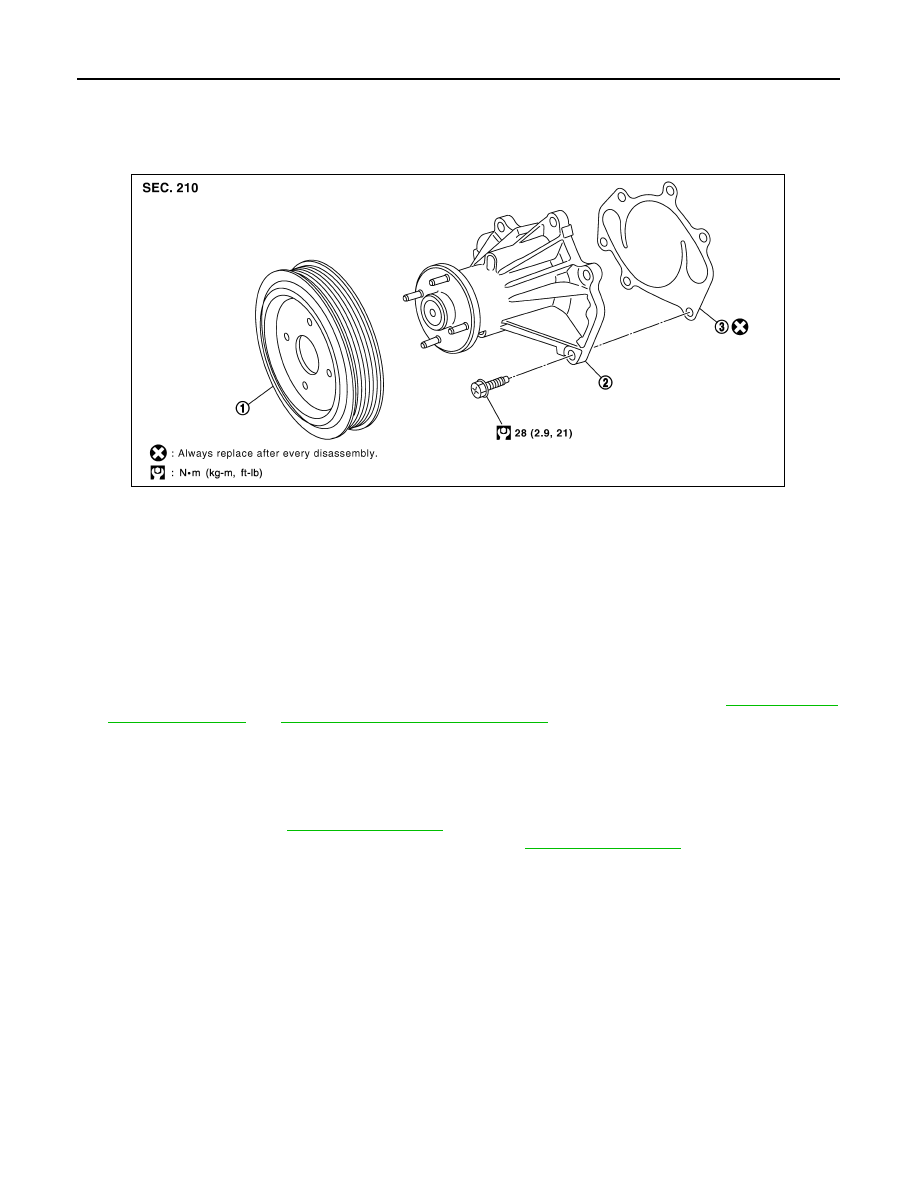Infiniti FX35 / FX45. Manual - part 280

CO-50
< SERVICE INFORMATION >
[VK45DE]
WATER PUMP
WATER PUMP
Component
INFOID:0000000001325882
Removal and Installation
INFOID:0000000001325883
CAUTION:
• When removing water pump, be careful not to get engine coolant on drive belts.
• Water pump can not be disassembled and should be replaced as a unit.
• After installing water pump, connect hose and clamp securely, then check for leaks using radiator
cap tester (commercial service tool) and radiator cap tester adapter (commercial service tool).
REMOVAL
1.
Drain engine coolant from drain plugs on radiator and both side of cylinder block. Refer to
EM-242, "Disassembly and Assembly"
CAUTION:
• Perform this step when engine is cold.
• Do not spill engine coolant on drive belts.
2.
Remove following parts:
• Engine front undercover
• Air duct (inlet): Refer to
• Alternator, water pump and A/C compressor belt: Refer to
3.
Remove fan coupling with cooling fan, and then fan and water pump pulley.
4.
Remove water pump.
• Engine coolant will leak from cylinder block, so have a receptacle ready under vehicle.
CAUTION:
• Handle the water pump vane so that it does not contact any other parts.
• Do not disassemble water pump.
INSPECTION AFTER REMOVAL
1.
Fan and water pump pulley
2.
Water pump
3.
Gasket
PBIC1538E